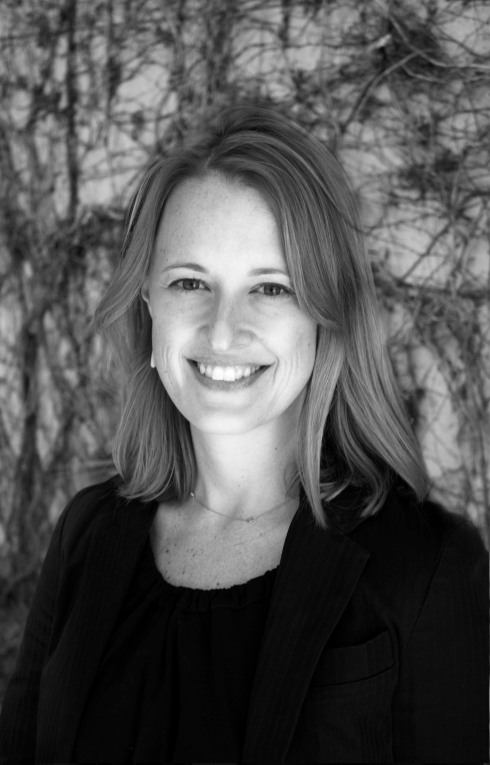The Department of Art History is delighted to welcome two new faculty members, Dr. Dipti Khera and Dr. Meredith Martin. Both will begin teaching at NYU in fall 2013.
Dipti Khera earned her Ph.D. in South Asian art history from Columbia University’s Department of Art History and Archaeology, completing a dissertation titled “Picturing India’s ‘Land of Kings’ Between the Mughal and British Empires: Topographical Imaginings of Udaipur and its Environs.” She holds M.A.’s in Art History and Archaeology as well as Museum Anthropology from Columbia University, an M.A. with Distinction in South Asian Design and Architecture from De Montfort University (Leicester, U.K.), and a B.A. in Architecture from Sir J. J. College of Architecture (Mumbai, India). Her dissertation research was supported by numerous fellowships and grants, including fellowships from the Paul Mellon Centre for British Art (London), the American Institute of Indian Studies (Chicago, IL), the Yale Centre for British Art (New Haven, CT), the Center for Advanced Study in the Visual Arts, National Gallery of Art (Washington, D.C.), where she was the Ittleson Fellow, the Metropolitan Museum of Art (New York), where she was the Andrew W. Mellon Fellow, C.V. Starr Foundation Scholarship, and Columbia University. From September 1, 2012-June 30, 2013, she was a Postgraduate Research Associate and Lecturer at the South Asian Studies Council, MacMillan Center, Yale University (New Haven, CT). For Academic Year 2013-14, she will be the Vivian G. Prins Global Scholar at NYU.
Dr. Khera’s research interests lie in the art and urban topography of Rajasthan between the seventeenth and nineteenth centuries, including painted scrolls, large-scale paintings, maps, and drawings; intellectual thinking on the experience of urban spaces and the consumption of material things in early modern South Asia; long eighteenth century in South Asia; historiography of cross-cultural encounters in art; design, decorative arts, and art education in colonial India; modern architecture and comparative urbanism; and contemporary heritage landscapes. She has published articles and essays on nineteenth-century Indian metalwork and early nineteenth-century Rajasthani painting. She has worked with several major museums in the USA and India, including, most recently, the Arthur M. Freer and Sackler Galleries, Washington, DC and the City Palace Museum, Udaipur, India, with which she is developing an exhibition that reveals the major shift in Indian art represented by Udaipur painters’ engagement with conceptualizing place and representing reality in large-scale works in the eighteenth and nineteenth century..
Dr. Khera has taught previously at Columbia and Yale. At NYU, she will teach three undergraduate courses per year in the Department of Art History and one graduate course at the Institute of Fine Arts, in which she has an associated appointment.
In fall 2013, Dr. Khera will teach two courses in the Department of Art History: South Asian Art I, a lecture course on pre-modern South Asian art and architecture open to all majors and other NYU students, and an advanced seminar titled Beyond and Between the Mughal and British Empires: Cross Cultural Encounters in South Asian Art, 1500-1900.
Meredith Martin earned her Ph.D. from Harvard University’s Department of the History of Art and Architecture, completing a dissertation titled “Dairy Queens: Sexuality, Subjectivity and Space in Pleasure Dairies from Catherine de’ Medici to Marie-Antoinette.” The research for her dissertation was supported by a Samuel H. Kress Foundation Travel Fellowship, a Chester Dale Predoctoral Fellowship from the Center for the Advanced Study in the Visual Arts, National Gallery of Art (Washington, DC), and fellowships from Harvard University. She held an Andrew W. Mellon Postdoctoral Fellowship in the Department of Art and Archaeology, Columbia University, as well as a fellowship from The Drawing Institute at the Morgan Library and Museum.
Dr. Martin’s research interests focus on notions of space in modernity—its esthetics, its class implications, and its gendered norms and contradictions. Her dissertation formed the basis of her book, Dairy Queens: The Politics of Pastoral Architecture from Catherine de’ Medici to Marie Antoinette (Harvard University Press, 2011), which was a finalist for the Berkshire Conference of Women Historians First Book Prize. Dr. Martin has published numerous articles, essays, and reviews on Bourbon regime architectural history and decoration as well as contemporary art. With Denise Baxter, she edited Architectural Space in Eighteenth-Century Europe: Constructing Identities and Interiors (Ashgate, 2010); and with Scott Rothkopf, she authored Period Eye: Karen Kilimnik’s Fancy Pictures to accompany an exhibition at London’s Serpentine Gallery (2007). More recently, she has examined the impact of global exchange on French art, architecture, and material culture. Her current projects include a study of diplomatic and cross-cultural encounters in eighteenth-century French art and a symposium on global exchange, “Objects in Motion in the Early Modern World,” organized with Daniela Bleichmar and Joanne Pillsbury at The Getty Research Institute.
Dr. Martin has taught at Harvard, Columbia, and, since 2008, Wellesley College, where she was Assistant Professor of 18th– and 19th-Century European Art. At NYU, she will teach three undergraduate courses per year in the Department of Art History and one graduate course at the Institute of Fine Arts, where she has an associated appointment.
In fall 2013, Dr. Martin will teach two courses in the Department of Art History: an advanced special topics lecture on Art in the Age of Revolution: European Painting, Sculpture, and Architecture, c. 1750-1875, and an advanced seminar on Art, Artists, and the Modern Public.









